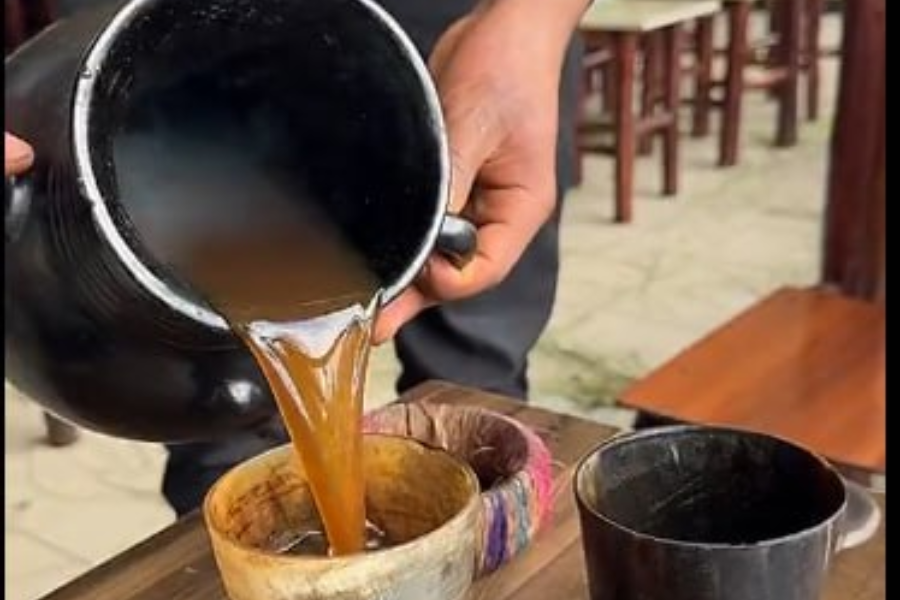
Life Matters | Jul 18,2021
Not long ago on a sunny morning, while I was contemplating the route of my daily walks, an idea long kicking around in my mind popped up. It was to buy a frame from a gift shop for a painting I bought ages ago.
It was a painting by Luelseged Reta, whom I had the chance to meet as an undergrad while making many exoduses to art exhibitions. He had a showing at Alliance Ethio-Française. The artist himself was there.
I usually look at the artwork by myself, yet that day I dared to approach the artist and ask him a question. Somehow, the conversation diverted to him muttering whether I had children or not. I did not. I intended to select two of his most favorite works and ask him to explain to me what they represent. I did not have to. He took me to where his paintings were hung. It was with this gesture that I never forgot his visual vocabulary. It reverberates to this day every time I look at artwork.
I understood why he had talked about children. There was a painting of a mother with her four children. But what caught my eye was a striking watercolor painting depicting a man and woman, highlighting the quintessence of a spectacle from an Ethiopian village. They are eagerly taking part in the preparation of tella, a traditional alcoholic drink.
A year later, in a souvenir shop, I saw a copy of the painting. A fresh graduate at the time, it cost almost all the money I had that day. I had to skip dinner later that night, but I bought it. However, for this or that reason, it was never framed. Yet it has always been kept in a safe place.
I arrived at the only gift shop in my neighbourhood for the frame. It is also an art gallery for young painters. The collections were all oil paintings, ranging from representational to figurative.
It was, in a way, reminiscent of old days when children would use watercolours, or more likely just colouring pencils, to draw flowers, angels and birds for holidays. They would be presented to neighbours. Things usually never go as planned – a roller coaster ride on the colour wheel. Sometimes the composition was all over the place. Other times, it became nearly impossible to get the proportions of the face right. White drawing paper was not as ubiquitous those days, making second chances not easy to come by. In the end, for the neighbours, it was the effort that counted.
I told the young owner at the shop about the power of art, especially Stendhal syndrome. In 1817, Stendhal visited Florence. In his diary, the French novelist noted how he suddenly fell ill due to being close to all the great works of art in the city, as if his life was being drained from him. It was only when he distanced himself from them that he got better, an experience said to be shared by some visitors in Florence every year. Stendhal syndrome is not an actual medical affliction. But that it has an actual term speaks to how high of a pedestal art stands on.
Let us hope mini-galleries like the one I visited increase in number, as should art schools. More learned eyes with a taste for good art, instead of seeing it merely mechanically, are the real customers that incentivise a thriving art scene.
It is encouraging that hotels nowadays usually carry original works of art by local painters. No less encouraging are the modest galleries that pop up as a part of events, like at Fendika Cultural Centre.
PUBLISHED ON
Mar 27,2021 [ VOL
21 , NO
1091]


Life Matters | Jul 18,2021

Verbatim | May 21,2022

Sunday with Eden | Dec 07,2024

Verbatim | Aug 13,2022

Fortune News | Nov 03,2024

View From Arada | Apr 20,2025

Life Matters | Apr 26,2019

Radar | Mar 16,2024

Agenda | Jul 13,2025

Radar | Oct 16,2021

Dec 22 , 2024 . By TIZITA SHEWAFERAW
Charged with transforming colossal state-owned enterprises into modern and competitiv...

Aug 18 , 2024 . By AKSAH ITALO
Although predictable Yonas Zerihun's job in the ride-hailing service is not immune to...

Jul 28 , 2024 . By TIZITA SHEWAFERAW
Unhabitual, perhaps too many, Samuel Gebreyohannes, 38, used to occasionally enjoy a couple of beers at breakfast. However, he recently swit...

Jul 13 , 2024 . By AKSAH ITALO
Investors who rely on tractors, trucks, and field vehicles for commuting, transporting commodities, and f...

Jul 12 , 2025
Political leaders and their policy advisors often promise great leaps forward, yet th...

Jul 5 , 2025
Six years ago, Ethiopia was the darling of international liberal commentators. A year...

Jun 28 , 2025
Meseret Damtie, the assertive auditor general, has never been shy about naming names...

Jun 21 , 2025
A well-worn adage says, “Budget is not destiny, but it is direction.” Examining t...